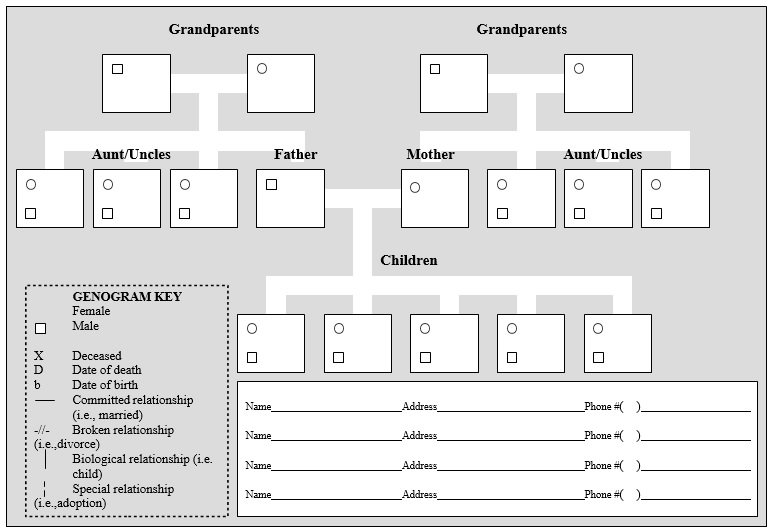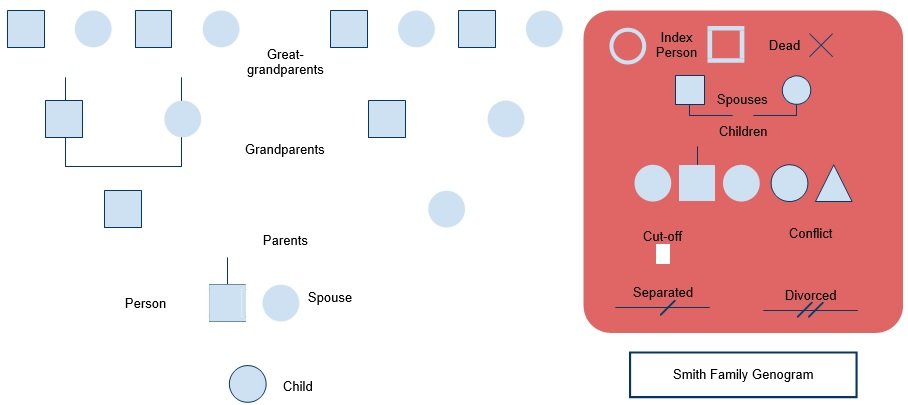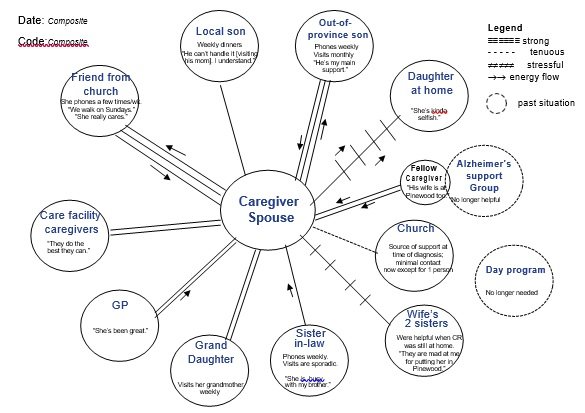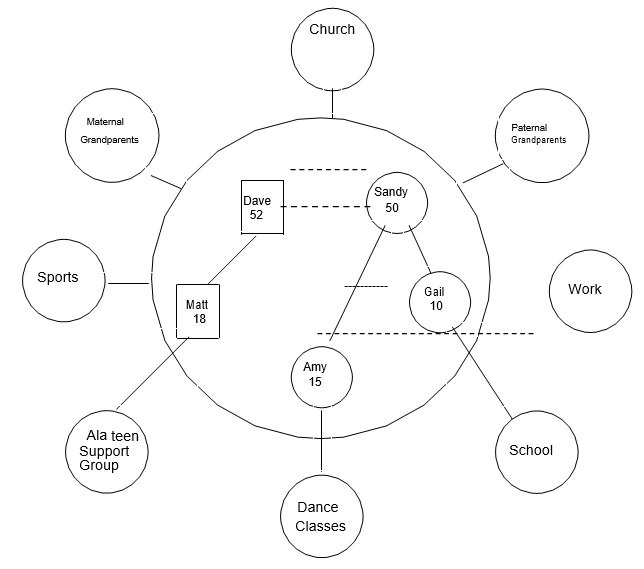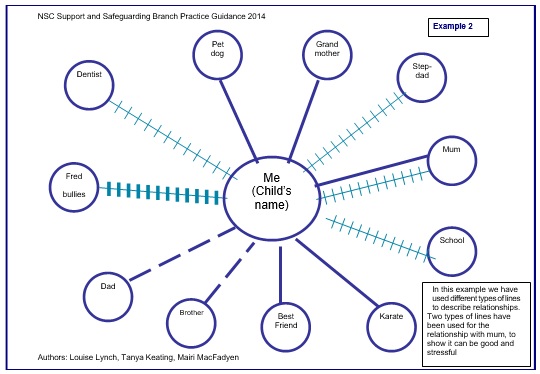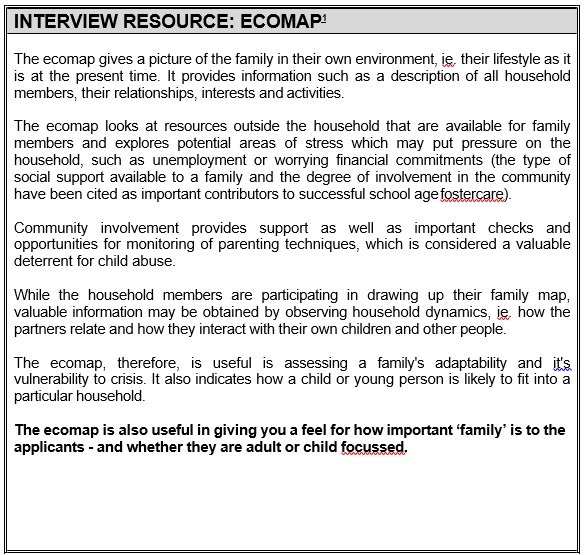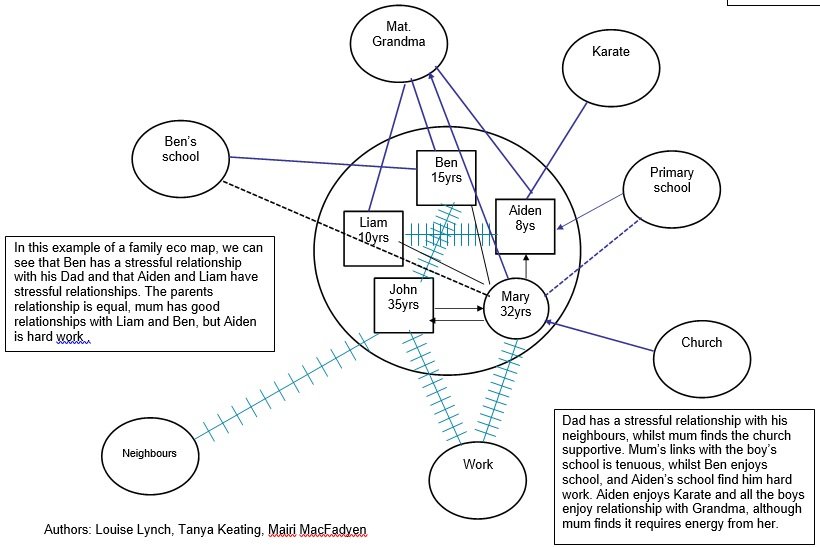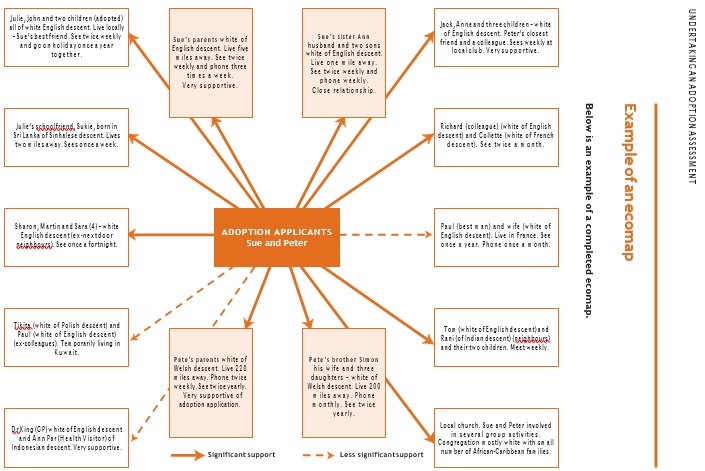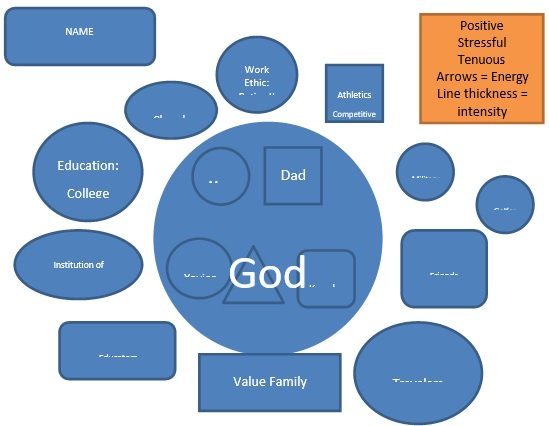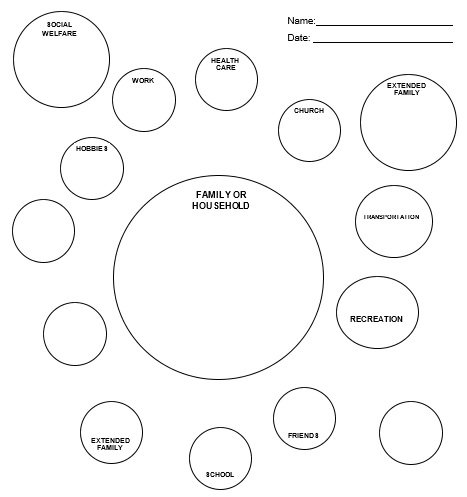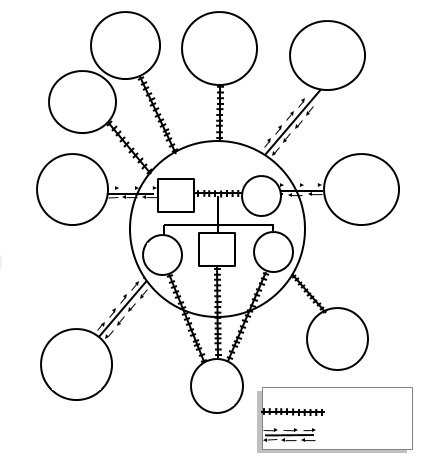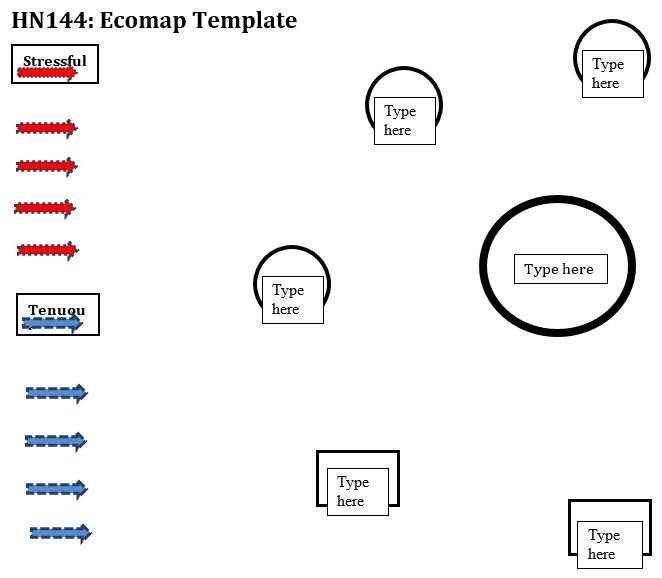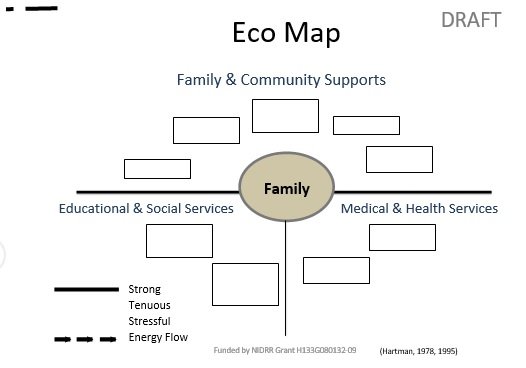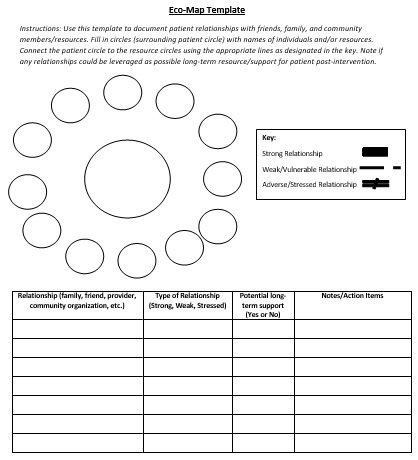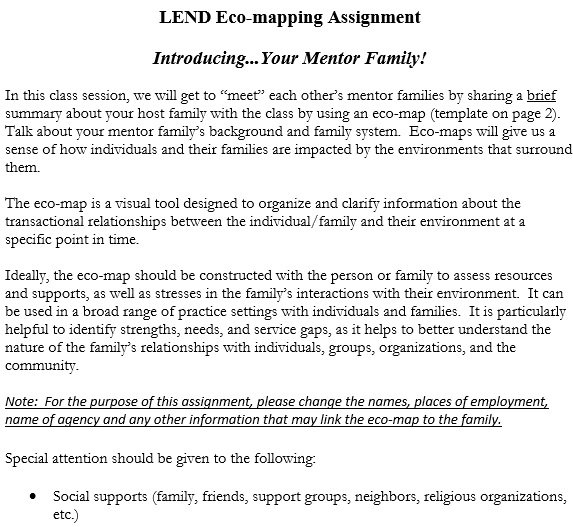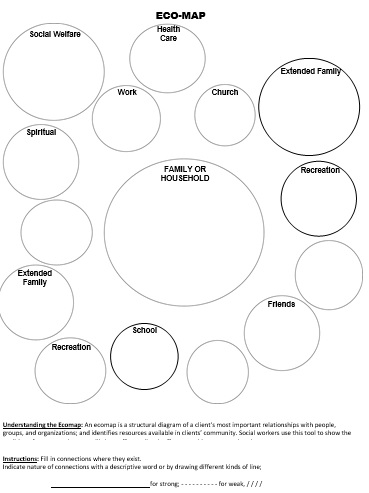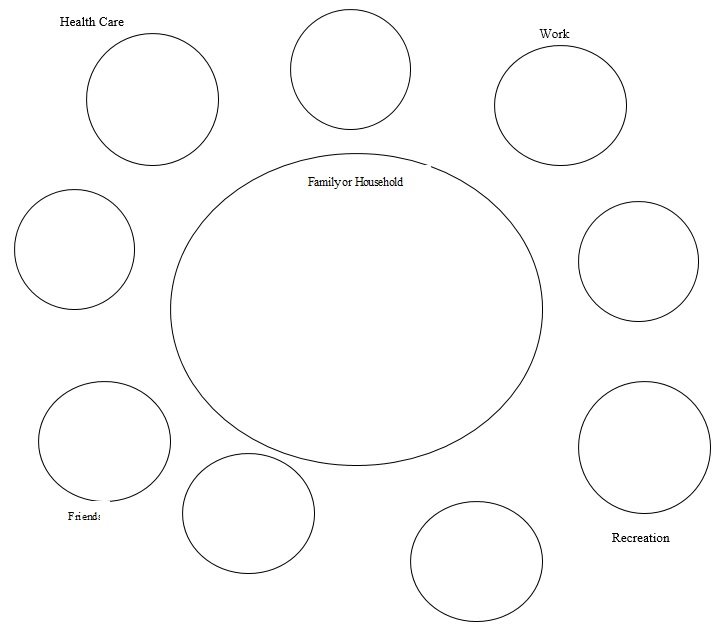The Ecomap template is used by social workers to keep record and identify the social and personal relationships between an individual or a family and their external environment. Social workers and counselors use ecomaps to analyze the stressors or causes of depression and anxiety. Along with an identifier of biological relationships, it also analyzes the external connections and the quality and effect of them on people.
What is an Ecomap?
An ecomap is a visual representation that displays the relationship between a person and his environment. It indicates the connections an individual has to a bigger social system that may contain;
- Mezzo, macro, or micro levels.
- Informal support such as extended family and friends.
- Formal support such as careers, service agencies, etc.
Moreover, you can place an individual or a family in their current social standing with the help of a person or a family ecomap. This document acts as reference that informs you in what you should look at in a case and not what you should do. You should also check Genogram Templates & Symbols.
What is an ecomap of a family?
In a family ecomap, the family is placed in the middle of the ecomap graphic or drawing. Various lines are used to link the family or individual family members to their social environment. By understanding your own family ecomap, you can improve your family socially in terms of support, community engagement and social service programs.
Using an Ecomap:
Since ecomap provides useful information about individuals or families so social workers and other professionals use them for developing case plans. They are considered as visual maps of a subject’s connections to the world. Ecomaps make you able to create different relationships and how strong these connections are. Furthermore, it proves its usefulness during working with refugee and migrant families. They provide detailed visualizations of their relationships. Also, they map out the areas of disconnection or isolation that you might require to address.
Ecomap is the term that often encountered in related studies. It provides a historical picture of a family and their links between and across generations. It also helps in locating the family in its current social situation. In addition, it provides you a comprehensive visualization of the following;
- Family dynamics
- Connections of each member of family to the social support system
- Connections of each member of family to the community
- Areas of deprivation
- Areas of severe duplication
- The level of connections of the entire family unit to the world
During working with the family of a young person, you can expect some disagreements amongst family members. These disagreements may be about the quality of relationships, the nature, and the level of support given by different influences.
Other information you can find on an Ecomap:
You can also explore the following areas using an ecomap;
- The feelings of the members of the family about their neighborhood.
- Whether the family base on professional agencies or the people they know for support.
- Kind and quantity of support they get.
- Any duplication of the services provided to them in order to make them able to communicate about it.
- The family participation in other activities either outside of work or school and belonging of any family members to groups.
- Type of health care the family receive.
- The needs that the family has and isn’t getting addressed.
Types of ecomap templates:
The main purpose of an ecomap is to assess families to provide them the chance to participate in extensive ways. This provides you a graphical representation along with a picture of the connections between the family and their environment. The flow of resources, stresses, deprivations, interactions, and points of conflict are explained by ecomap. There are two most common types of ecomaps templates;
- Ecomap Social Work Templates
- Family Ecomap Templates
How to make your own ecomap template?
With the help of an ecomap template, you can create your own ecomap easily. After making it, you can utilize it to find an individual’s personal and social connections in his/her environment. For developing case plans and family counseling, it has become a useful tool.
There is a strong relationship between genogram and ecomap. A genogram deals more with a person’s family history. On the other hand, an ecomap indicates the individual’s relationships within the environment. You should use the templates in order to make an appealing and easy to understand ecomap in a matter of minutes.
Users like Family counseling professionals and social workers use ecomaps most frequently because this is the best way to learn about a person’s most important connections and relationships. You can also say it as an eco-gram.
In the blank fields on the template, you just have to enter a few details. It has become easier to draft ecomaps due to the advancement of technology.
How do you draw your own ecomap?
An ecomap is a helpful tool that assists you in describing, organizing, and understanding the ways people relate with each system in their lives. An ecomap may involve an individual’s connections to the system.
You can use your own ecomap with the help of simple shapes with a legend. Let is discuss it step-by-step;
- At first, you have to draw a circle in the center to display your subject.
- Next, to represent each of the groups, people, institutions, and other entities, draw small circles around your subject. You can include friends, family members, education institutions, and more in these representations. In the middle of each circle, write the name of the entities.
- Now, it’s time to add connections between these entities and your subject. Draw connections between your subject and small circles around your subject. Make use of different kinds of lines to represent different kinds of connections.
- It is best to use arrowheads to indicate the direction in which the resources flow or the mutuality level of a relationship. These symbols show the direction of influence of each relationship.
Ecomap symbols:
There are different types of ecomap symbols, let us discuss them below;
Thicker lines
Thicker lines in an ecomap indicates the stronger relationships between the two ends of the line. Sometimes, two lines are drawn to indicate the same, strong and positive, connection.
Curvy lines
Curvy lines are often red in color and are drawn to denote a stressful and negative relationship. These line are broken in some cases to show the source.
Single lines
These singles contain arrows that have a blunt end and a pointy end. The direction towards something is shown by the pointy end of the arrow. If the arrow is pointing to the center then it indicates that the flow of influence is pointed to the individual in question.
Difference between an Ecomap and a Genogram:
An ecomap and a genogram are visual mediums used to present information and relationships about an individual. They can be similar as well as different in various ways.
A genogram is basically a family tree that gives detailed information about a person’s family history. To define relationships, specific symbols are used such as a circle represents females and a square is for males. A symbol X shows that a person has already passed away. In genograms, different colors and lines are used that further illustrate each relationship.
On the other hand, an ecomap illustrates an individual and their personal and social connections.
Conclusion:
In conclusion, an ecomap template is an essential and powerful tool to assess different relationships and the quality of these relationships. You can use it to identify the subject’s resources, needs, strengths, and deficits. You can download ecomap template online or use an ecomap maker to make your own. Additionally, ecomap makes you able to track emotional relationships between the subject and their family members, friends, and more.
Faqs (Frequently Asked Questions)
Nursing is one of the common sectors where ecomaps are used. Nurses make ecomap to have proper details about their patients. It assists them in determining the problems and plan the interventions accordingly. Also, it makes the nurses able to identify the strength of the existing gaps.
Some of the dos are following;
1- Make an eye contact
2- Be an active listener to the interviewee
3- Indicating interest
4- Be sensitive to the individual’s family’s responses
5- Ask open-ended questions
Some of the don’ts are;
1- Look at the ecomap the whole time
2- Missing the family’s talk
3- Judge the responses of both the interviewee and the family
4- Supposing something by yourself

